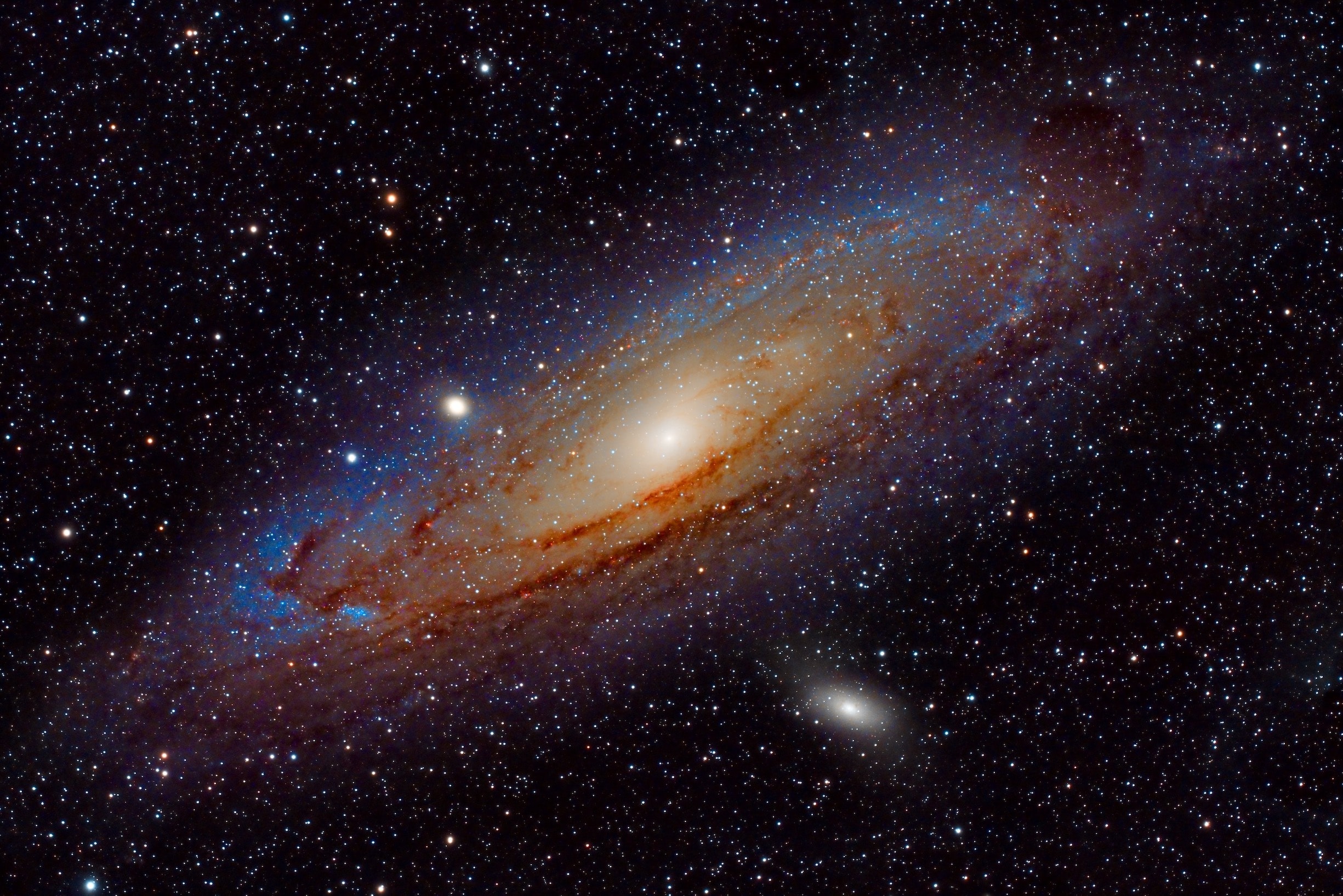
Although situated 2.5 million light years away, the Andromeda Galaxy is nonetheless visible to the unaided eye when seen from a dark sky site, which makes it the farthest space object observable without a telescope. According to Greek mythology, Andromeda was the daughter of King Cepheus and Queen Cassiopeia of Ethiopia. When Queen Cassiopeia offended the Nereids (sea nymphs) by claiming she was more beautiful, the nymphs complained to Poseiden, who sent the sea monster Cetus to decimate Cassiopeia’s lands as punishment. To end the conflict, King Cepheus offered princess Andromeda as a sacrifice to the beast. However, before Cetus could take her, Andromeda was rescued by the legendary hero Perseus, whom she later married and had several children with. In the night sky, the constellations Cassiopeia, Cepheus, Andromeda, and Perseus lay beside each other, immortalized by the stars. Over the course of several billion years, the Andromeda Galaxy and the Milky Way will merge into one massive galaxy as they gravitationally attract one another. The first documented observation of M31 came from Persian astronomer Abd al-Rahman al-Sufi in the year 964 A.D.
Acquisition Date: November 8, 2020–November 9, 2020
Acquisition Site: Backyard
Image Details: 103 x 120s (3h 26m)
Equipment: ZWO ASI2600MC-Pro, Takahashi FSQ-106EDXIII, Losmandy G11, Lumicon Deep-Sky Filter 2″
